Zone 7 Vegetable Planting Chart
Inside: A zone 7 vegetable planting chart so that you know the best times to plant each crop if you live in USDA hardiness zone 7.
This post is mostly for those of you who garden in Zone 7. I created a Zone 7 Vegetable Planting Chart since I wasn’t able to find what I wanted online. I wanted to give you specific guidelines on what you can grow and when you can plant your vegetables and herbs.
If you aren’t in Zone 7, you might like my Vegetable Planting Chart where you find your frost dates and fill them in on the chart so it tells you what to plant and when to plant it.
However, you can also adjust the dates on this vegetable planting chart based on your first and last frost dates to give you a better idea of what you should plant and when you should plant it.
These planting dates are based around an April 10th to 15th last expected frost date. At the end of the post, I explain how to adjust the dates based on your frost dates.
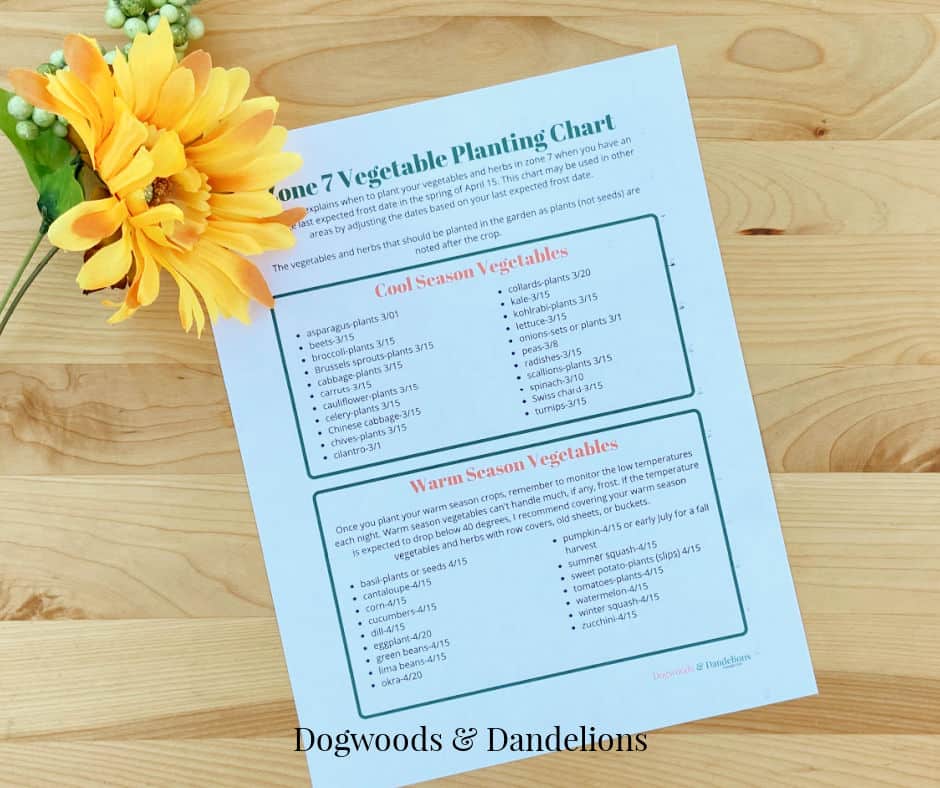
Affiliate Disclosure: Please note that some of the links in this article may be affiliate links and I may receive a small commission if you purchase something through a link. It will not change your cost. As an Amazon Associate, I earn from qualifying purchases. For more information, see my disclosures page.)
Cool Season vs. Warm Season Vegetables
Two types of vegetables to consider are cool-season vegetables and warm-season vegetables. Cool-season vegetables can handle a bit of frost. They are typically planted in late winter or early spring but they can also be planted in late summer for a fall crop.
Warm-season vegetables are those that can’t tolerate much, if any, frost. Think tomatoes, peppers, and watermelons. They like it hot.
Planting your vegetables at the wrong time is a recipe for failure. (And we don’t want that!) All warm-season vegetables should be planted after you no longer expect any frost in your area.
Read: Cool-Season vs. Warm-Season Vegetables – What’s the difference?
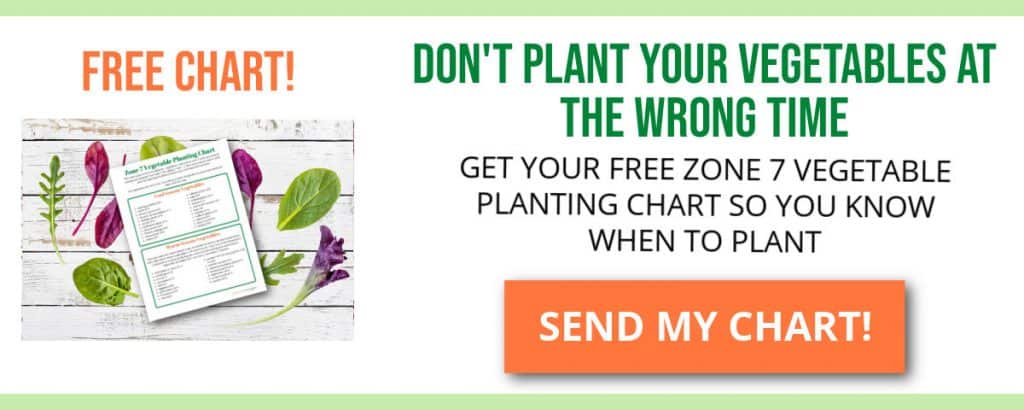
Last Spring Frost Date
To determine when you want to plant, you first need to find your last spring frost date. Here near Charlotte, North Carolina, this date is typically around April 10th to 15th.
Different sources will often give you slightly different dates. This is because it is an average of when the last expected frost will occur.
Keep in mind, that this is the last EXPECTED frost date. You can still get frost afterwards. Be prepared to cover your vegetables in the event a frost does occur.
If you don’t want to worry about covering your crops, I would wait an additional 2 weeks before planting the warm-season vegetables. (Since cool-season vegetables can handle frost, they should be fine planting them on the indicated dates.)
Read: How to Handle an Unexpected Frost – This post includes pictures of my garden one May when we had a late spring frost that was several weeks after planting my summer vegetables. If you need ideas of ways to cover your crops, this should give you plenty of ideas.
My Tricks to Harvesting Warm-Season Vegetables Even Earlier
I’m going to tell you a little trick I use some years to get my garden started even earlier. Many weather apps have a 10-day forecast. While not extremely reliable, these can give you an idea of what the weather will be like.
So on April 1st (10 days before my last expected frost), I start checking the low temperatures. If I don’t see a low below 40, I’ll go ahead and plant my warm-season crops. If I see temps below 40, I wait a bit longer.
I realize that freezing is 32 degrees. However, we live out in the country and our temperatures are often 5 or more degrees lower than the forecasted temps. I would rather be safe than lose all my vegetables.
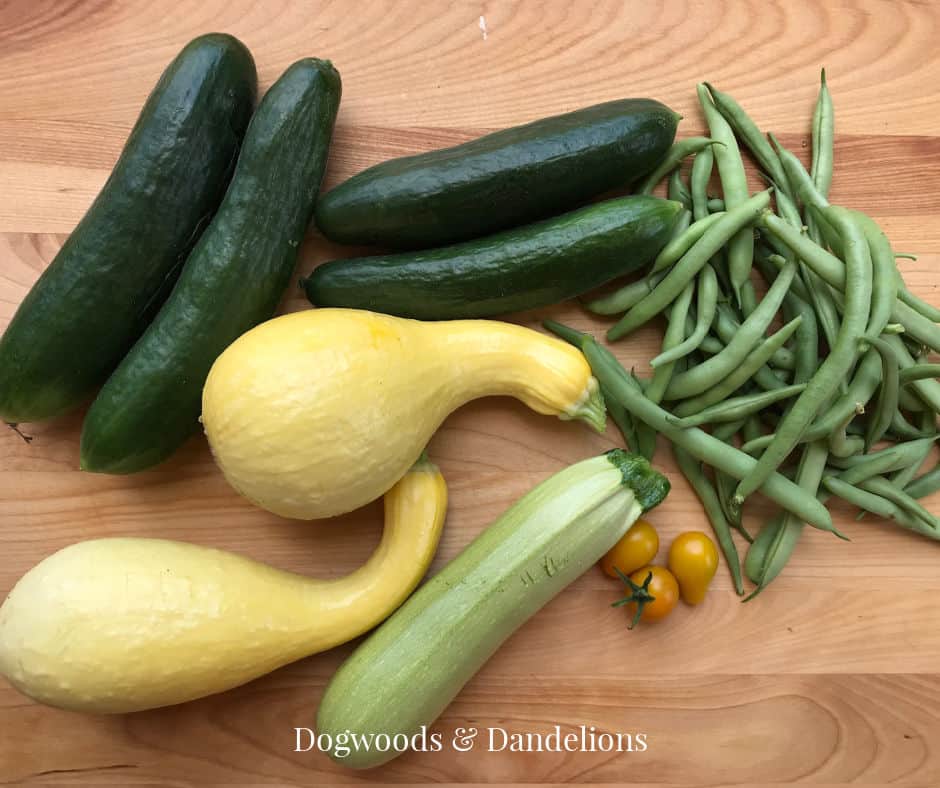
I do have row covers and old sheets that I can use if needed to cover the vegetables up should a late frost hit, but I also am a bit of a gambler. I definitely wouldn’t plant any expensive warm-season vegetables before your last expected frost date.
But since I usually start most of my own seeds and have extras, I’ll put at least a few of them out. I like to live dangerously! 😂
I also usually plant a tomato or two in what is called “wall-o-waters” or “kozy coats.” As long as the tomato plants haven’t grown above the wall-o-water, these have protected my plants from mild frosts.
My Mom has used these for years. One year she managed to harvest a tomato on May 15, barely a month after our last frost.
First Fall Frost Date
The first fall frost date is also helpful since it will tell you when to expect your warm-season crops to die. If you know when this date is, you can harvest all of your summer crops before the frost hits.
Remember, these dates are just a guideline. They don’t mean you can’t have a frost before your first expected fall frost date. That date is just an estimate. Mother Nature is very fickle and unpredictable.
List of Cool Season Vegetables & Herbs
These cool-season vegetables can be (and usually SHOULD be) planted before your first spring frost. They grow best in cooler weather.
- asparagus
- beets
- broccoli
- Brussels sprouts
- cabbage
- carrots
- cauliflower
- celery
- Chinese cabbage
- chives
- cilantro
- collards
- kale
- kohlrabi
- leeks
- lettuce
- onions
- peas
- radishes
- scallions (bunching onions)
- spinach
- Swiss chard
- turnips

List of Warm Season Vegetables & Herbs
These vegetables don’t handle frost at all. Any amount of frost will usually damage them and even a mild frost will most likely kill them. Wait until after your last expected spring frost to plant these.
- basil
- cantaloupe
- corn
- cucumbers
- dill
- eggplant
- green beans
- lima beans
- okra
- peppers
- pumpkin
- summer squash
- sweet potato
- tomatoes
- watermelon
- winter squash
- zucchini
Zone 7 Printable Vegetable & Herb Planting Chart
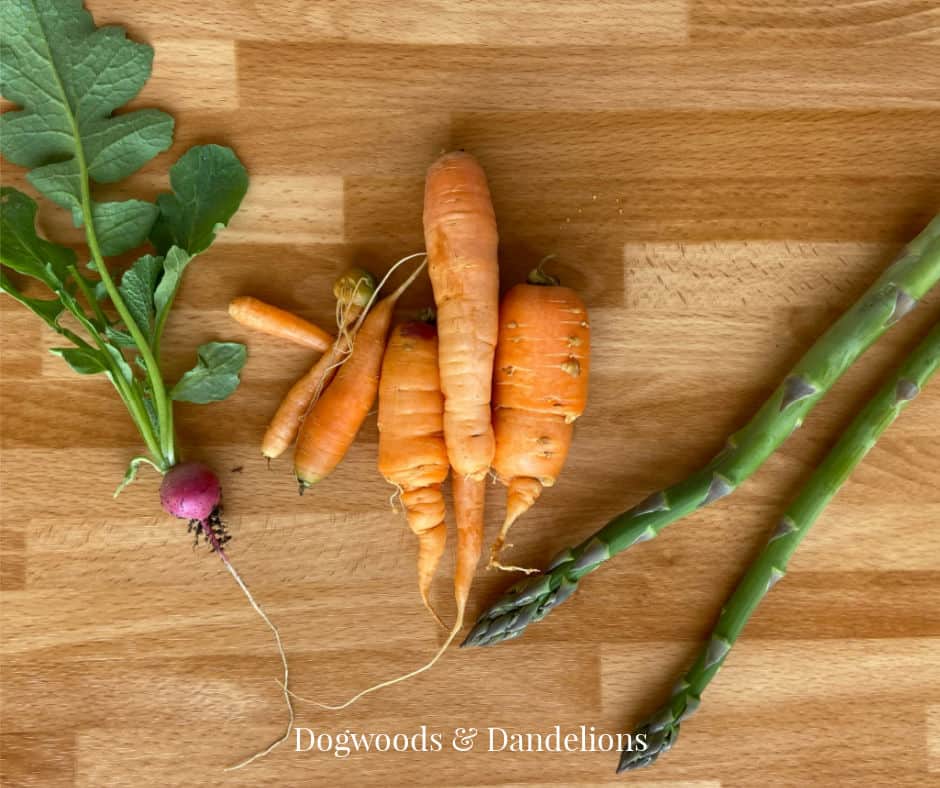
I created a printable chart so if you are gardening in Zone 7, you’ll know exactly when it “should” be safe to plant each vegetable. The chart is broken down into cool season vs. warm season vegetables and herbs.
You will still need to monitor the weather forecasts to be sure your lows aren’t expected to dip below 40 or so.
You may find some discrepancies between my planting dates and other dates on the internet. This can be due to microclimates or others just being more conservative on dates than I am. These dates have worked for me, though there is no guarantee you won’t see a later frost.
If in doubt it is better to wait. Or be prepared with old sheets or row covers or even empty buckets to put over your crops. Zone 7 has a fairly long growing season so there isn’t a rush to get your vegetables in the ground. (Unless you are like me. It’s hard for me to wait for my first zucchini each year.)
If you aren’t in Zone 7 and still would like to use this vegetable planting guide, find your last expected spring frost. Figure how many days between your last frost and April 15. Adjust the planting dates on the chart accordingly.
For instance, if your last expected spring frost is April 30, add 15 days to the dates on the chart. That should give you a relatively close estimate of when it’s safe to plant.
Hopefully, you now have a better idea of when to plant your garden. Feel free to add any questions in the comments.
Related Posts
- Find Your Gardening Zone
- How to Get Tomatoes Started Earlier so you can harvest homegrown tomatoes sooner.
- Don’t Make These Mistakes Most Beginning Gardeners Make


Meet Julie
I’m a farm girl born and bred in North Carolina. I’ve been growing a vegetable garden for over 20 years (and helping my Mom grow hers even longer). I’ve been raising chickens in my bathtub and backyard for 12+ years. I believe that homegrown food can be made simple. Let’s get started.
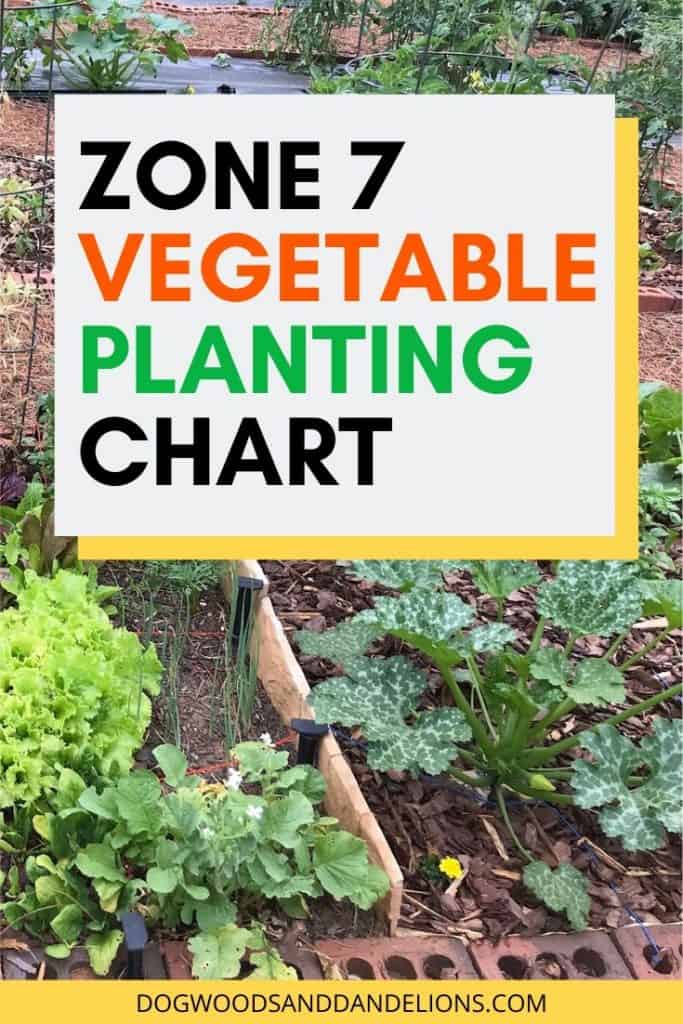

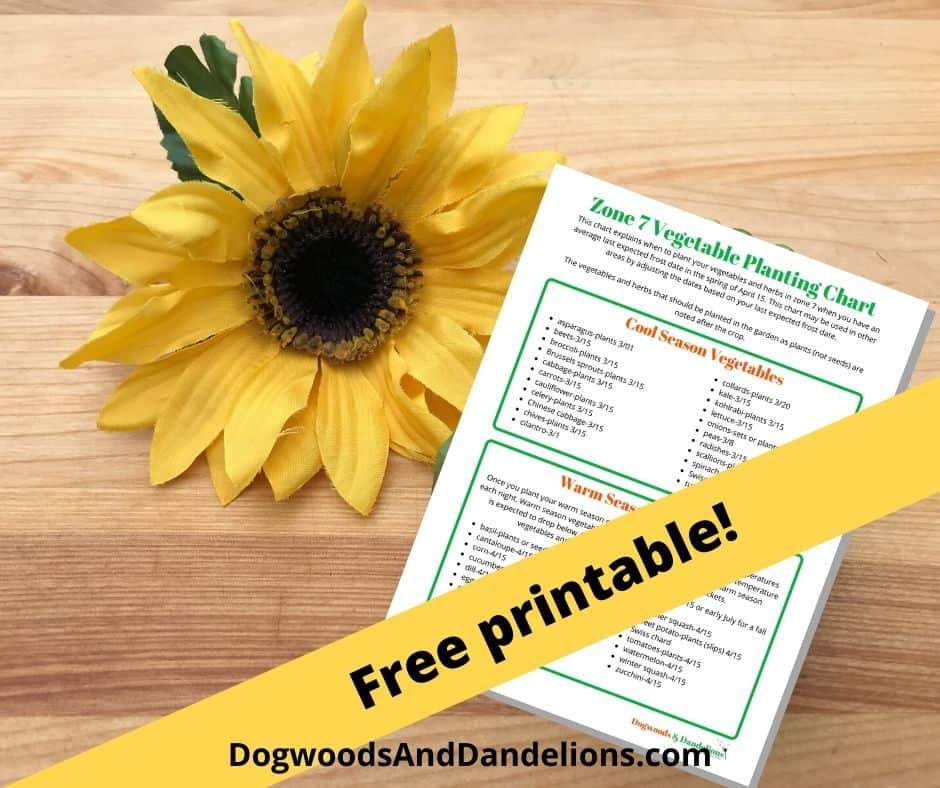
Do you happen to have a list like this for cut flowers?
Unfortunately, I don’t. I’m sorry. I even did a quick Google search and could not find anything. I am making a note as this might be something I could do in the future.
When to plant potatoes and garlic not on your chart
You can plant potatoes in late March and garlic in late October or early November.
Free printable? I can not find it please Thankyou have a nice day
I’m sorry you were unable to locate where to sign up for the free printable. Click here and it will take you to the sign up form. Once you enter your name and email address you will be sent directions on how to access it from my Resource Library.
I’d love a free printable on when to plant what veggies. Thanks.
Apparently, I was having an issue with the sign up form this morning. I am so sorry. You can use this link to sign up now to get access to the printables library. Resource Library Access